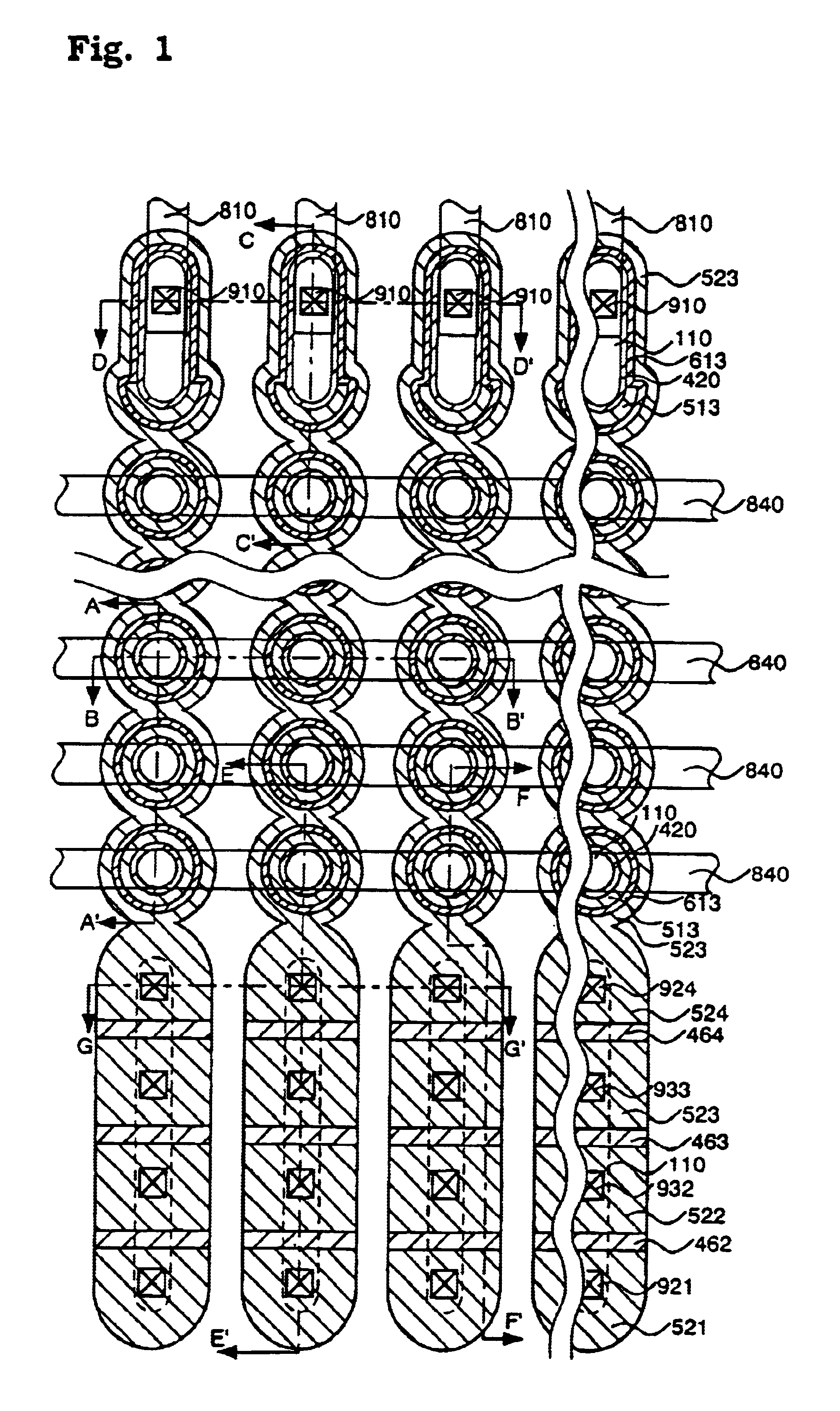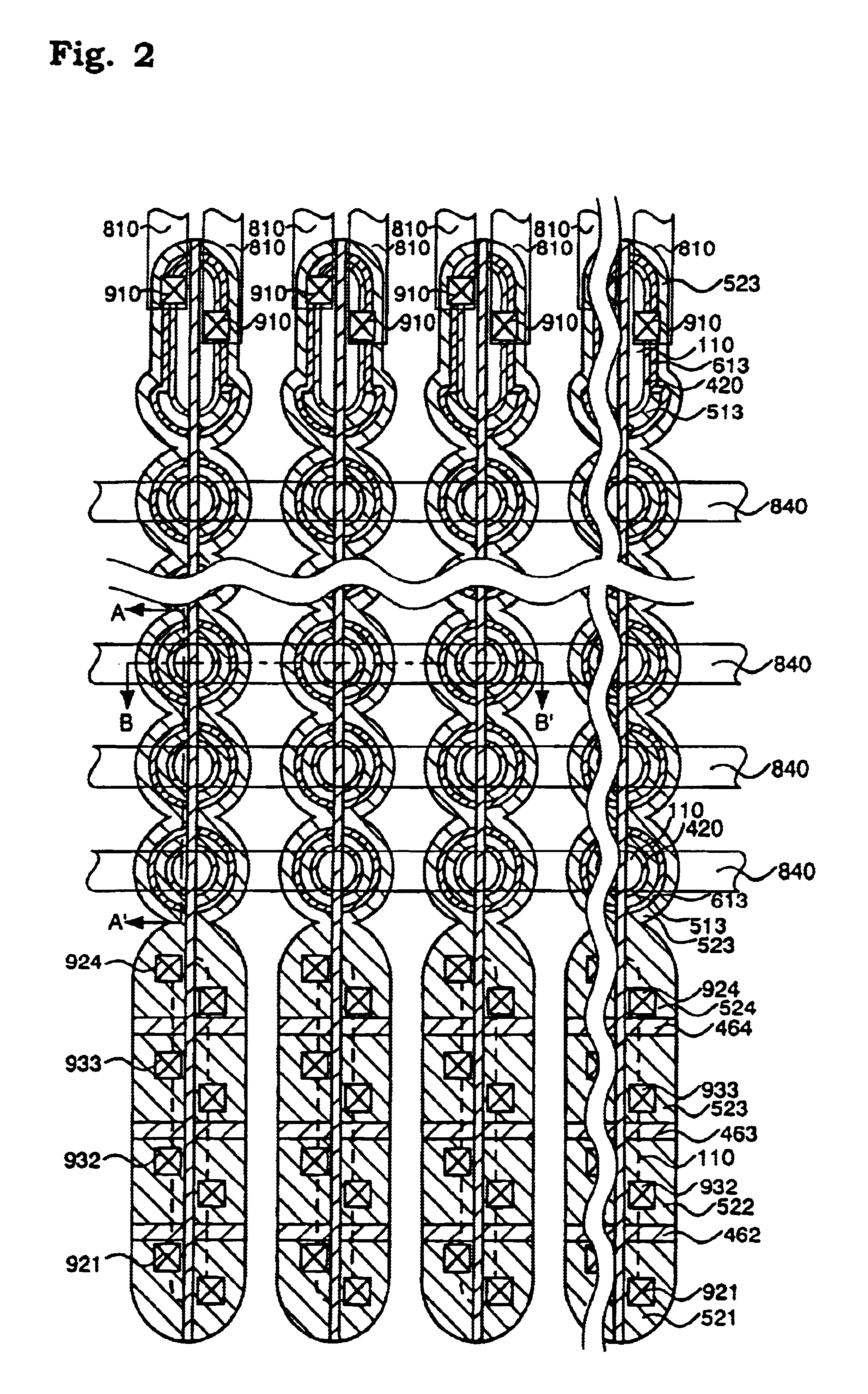Semiconductor memory with gate at least partially located in recess defined in vertically oriented semiconductor layer
a semiconductor layer and semiconductor technology, applied in the field of semiconductor memory, can solve the problems of inability to meet the requirements of reliability, difficult to write and erase, and limited thinning of gate insulating film, etc., and achieve the effect of increasing capacitance, high speed operation, and increasing the electrical field from the control gate to the active region of the memory cell
- Summary
- Abstract
- Description
- Claims
- Application Information
AI Technical Summary
Benefits of technology
Problems solved by technology
Method used
Image
Examples
production example 1
[0209]In a semiconductor memory to be produced in this example, a semiconductor substrate is patterned in the form of pillars to form island-like semiconductor layers having at least one recess. Sides of the island-like semiconductor layers make active regions. Tunnel oxide films, floating gates and control gates are formed in the recesses. The island-like semiconductor layers have additional recesses at the top and the bottom thereof and selection gate transistors including gate oxide films and selection gates are arranged therein. A plurality of memory transistors, for example, two memory transistors, are placed between the selection gate transistors and are connected in series along the island-like semiconductor layer. The thickness of gate insulating films of the selection gate transistors is larger than the thickness of gate insulating films of the memory transistors. The tunnel oxide films and the floating gates of the memory transistors are formed at the same time.
[0210]Such ...
production example 2
[0252]In a semiconductor memory to be produced in this example, a semiconductor substrate is patterned in the form of pillars to form island-like semiconductor layers having at least one recess. Sides of the island-like semiconductor layers make active regions. Tunnel oxide films, floating gates and control gates are formed in the recesses. The island-like semiconductor layers have additional recesses at the top and the bottom thereof and selection gate transistors including gate oxide films and selection gates are arranged therein. A plurality of memory transistors, for example, two memory transistors, are placed between the selection gate transistors and are connected in series along the island-like semiconductor layer. The thickness of gate insulating films of the selection gate transistors is larger than the thickness of gate insulating films of the memory transistors. The tunnel oxide films and the floating gates of the memory transistors are formed at the same time.
[0253]A sem...
production example 3
[0257]In a semiconductor memory to be produced in this example, a semiconductor substrate is patterned in the form of pillars to form island-like semiconductor layers having at least one recess. Sides of the island-like semiconductor layers make active regions. Tunnel oxide films, floating gates and control gates are formed in the recesses. The island-like semiconductor layers have additional recesses at the top and the bottom thereof and selection gate transistors including gate oxide films and selection gates are arranged therein. A plurality of memory transistors, for example, two memory transistors, are placed between the selection gate transistors and are connected in series along the island-like semiconductor layer. The thickness of gate insulating films of the selection gate transistors is larger than the thickness of gate insulating films of the memory transistors. The tunnel oxide films and the floating gates of the memory transistors are formed at the same time.
[0258]A sem...
PUM
 Login to View More
Login to View More Abstract
Description
Claims
Application Information
 Login to View More
Login to View More - R&D
- Intellectual Property
- Life Sciences
- Materials
- Tech Scout
- Unparalleled Data Quality
- Higher Quality Content
- 60% Fewer Hallucinations
Browse by: Latest US Patents, China's latest patents, Technical Efficacy Thesaurus, Application Domain, Technology Topic, Popular Technical Reports.
© 2025 PatSnap. All rights reserved.Legal|Privacy policy|Modern Slavery Act Transparency Statement|Sitemap|About US| Contact US: help@patsnap.com



